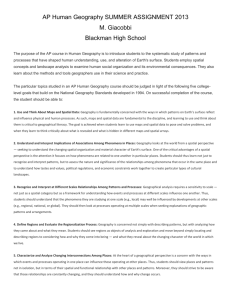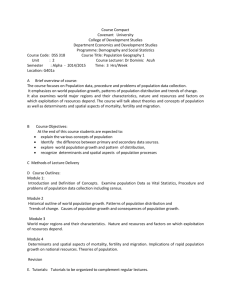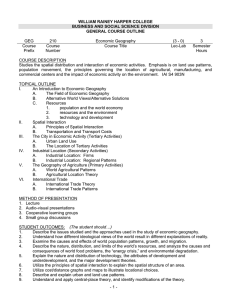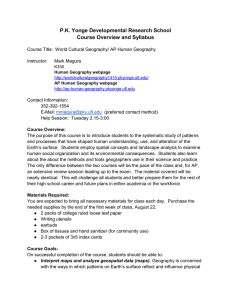AP Human Geography Syllabus - Miami Beach Senior High School
advertisement
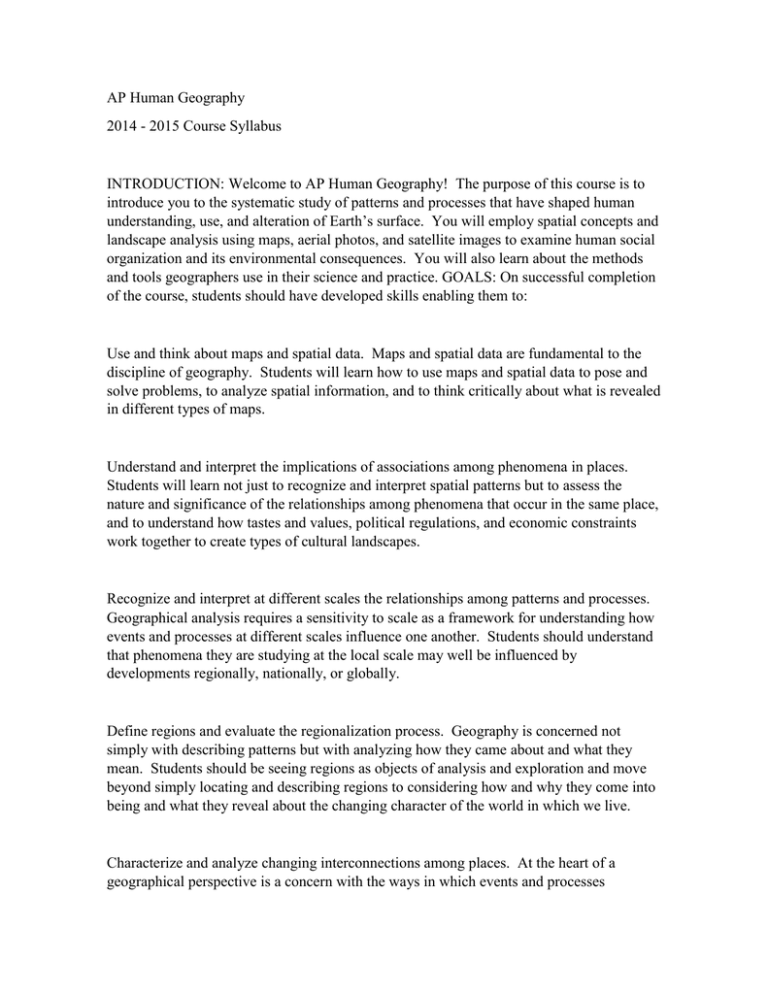
AP Human Geography 2014 - 2015 Course Syllabus INTRODUCTION: Welcome to AP Human Geography! The purpose of this course is to introduce you to the systematic study of patterns and processes that have shaped human understanding, use, and alteration of Earth’s surface. You will employ spatial concepts and landscape analysis using maps, aerial photos, and satellite images to examine human social organization and its environmental consequences. You will also learn about the methods and tools geographers use in their science and practice. GOALS: On successful completion of the course, students should have developed skills enabling them to: Use and think about maps and spatial data. Maps and spatial data are fundamental to the discipline of geography. Students will learn how to use maps and spatial data to pose and solve problems, to analyze spatial information, and to think critically about what is revealed in different types of maps. Understand and interpret the implications of associations among phenomena in places. Students will learn not just to recognize and interpret spatial patterns but to assess the nature and significance of the relationships among phenomena that occur in the same place, and to understand how tastes and values, political regulations, and economic constraints work together to create types of cultural landscapes. Recognize and interpret at different scales the relationships among patterns and processes. Geographical analysis requires a sensitivity to scale as a framework for understanding how events and processes at different scales influence one another. Students should understand that phenomena they are studying at the local scale may well be influenced by developments regionally, nationally, or globally. Define regions and evaluate the regionalization process. Geography is concerned not simply with describing patterns but with analyzing how they came about and what they mean. Students should be seeing regions as objects of analysis and exploration and move beyond simply locating and describing regions to considering how and why they come into being and what they reveal about the changing character of the world in which we live. Characterize and analyze changing interconnections among places. At the heart of a geographical perspective is a concern with the ways in which events and processes operating in one place can influence those operating in other places. Students should view places and patterns not in isolation but in terms of their spatial and functional relationship with other places and patterns. TOPICS: We will cover the following topics during the year in AP Human Geography: 1. Thinking Geographically 2. Language 3. Political Geography 4. Industry 5. Population 6. Religion 7. Development 8. Services 9. Migration 10. Ethnicity 11. Agriculture 12. Urban Patterns 13. Folk & Popular Culture 14. Resource Issues MATERIALS: Students should have the following materials available to use: A) Notebook, folder, paper, and pencils B) A good student atlas C) A “jump” drive useful for saving work from computer projects D) Colored pencils (a set of 24 or more) TEXTBOOK: An Introduction to Human Geography – Rubenstein Human Geography - Malinosky COURSE DESCRIPTION: refer to AP Human Geography Course Description document in the teacher’s class website.

